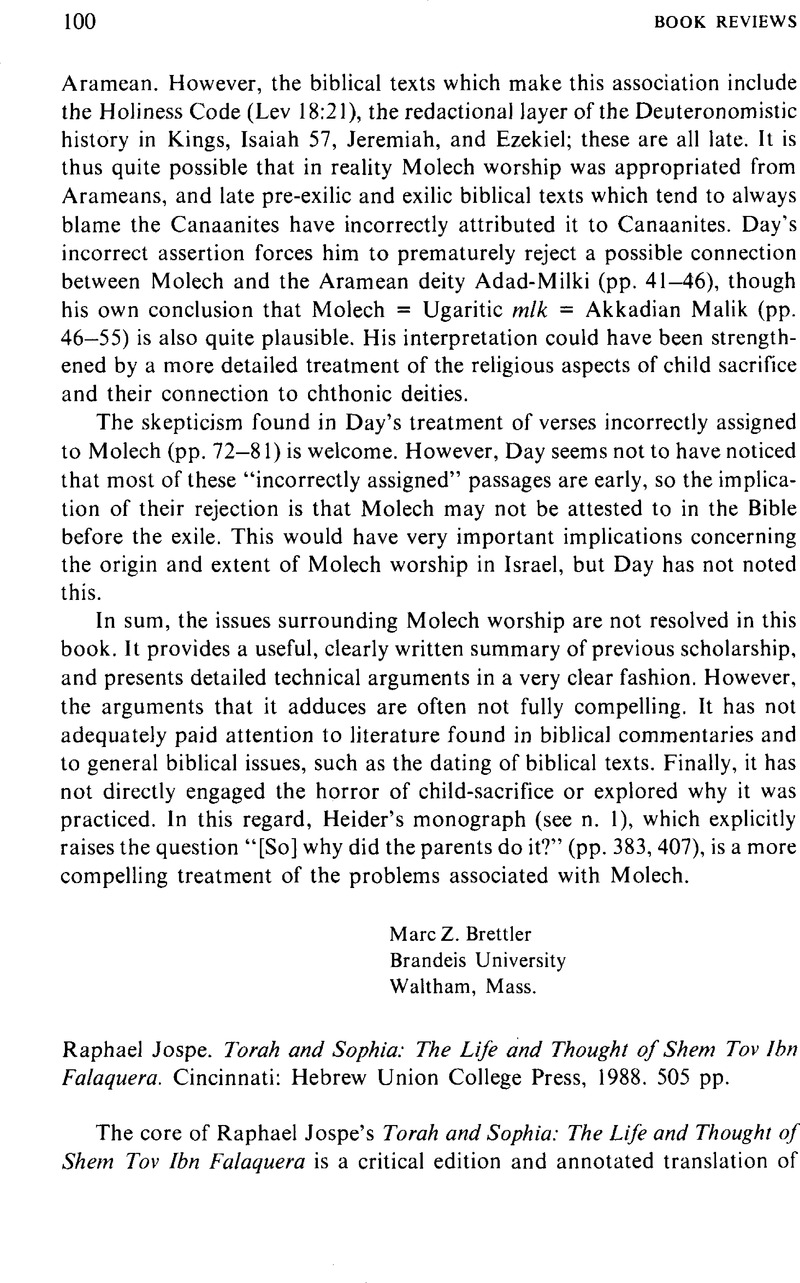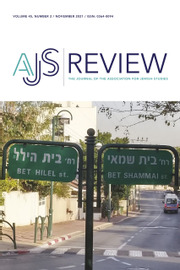No CrossRef data available.
Article contents
Raphael Jospe. Torah and Sophia: The Life and Thought of Shem Tov Ibn Falaquera. Cincinnati: Hebrew Union College Press, 1988. 505 pp.
Published online by Cambridge University Press: 15 October 2009
Abstract

- Type
- Book Reviews
- Information
- Copyright
- Copyright © Association for Jewish Studies 1992
References
1. In this connection, it should be noted that the influence of Averroes' Epitome of the De Anima on parallel sections of the De'ot is greater than Jospe realized (see pp. 186–188; and as an example, p. 243, 11, 7–8, where the text under discussion does not simply express “views which are similar” to those of Averroes, but views that are in fact translated verbatim from Averroes' Epitome!). I have compared several passages from the De'ot, cited by Jospe in his notes, with Averroes, ' Epitome of the De Anima (Hyderabad, 1947Google Scholar, hereinafter cited as EDA) and have found the following passages to be full or partial translations from this epitome: p. 363, n. 10, from EDA, pp. 23–24Google Scholar; pp. 368–369, n. 1, from EDA, pp. 33–35Google Scholar (first half of quotation; second half from Averroes' Middle Commentary on the De Anima); pp. 379–380, n. 6, from EDA, pp. 64–65Google Scholar; p. 383, n. 18, from EDA, pp. 72–73Google Scholar; pp. 385–387, n. 19, from EDA, pp. 80–85Google Scholar; p. 388, n. 21, from EDA, pp. 75–76Google Scholar; pp. 390–391, n. 7, from EDA, pp. 73–74Google Scholar (with a sentence in the middle from the Middle Commentary); p. 399, n. 2, from p. 89 (first sentence only, rest of passage from Middle Commentary); and pp. 400–401, n. 5, from EDA, 87–88.Google Scholar


